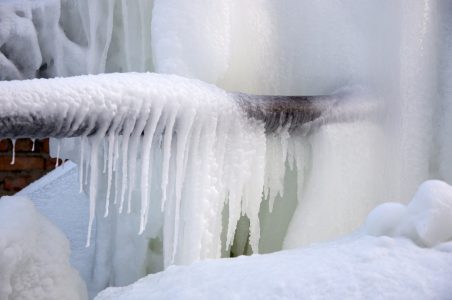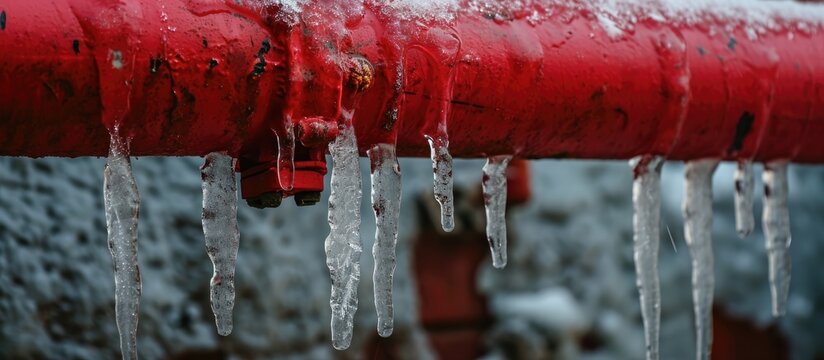Important Advice to Protect Against Frozen Plumbing in Winter
Important Advice to Protect Against Frozen Plumbing in Winter
Blog Article
On this page further down you can locate some sensible resources about How to Prevent Your Pipes From Freezing.

Cold weather can ruin your pipes, particularly by freezing pipelines. Right here's just how to stop it from occurring and what to do if it does.
Introduction
As temperature levels decrease, the danger of frozen pipelines boosts, possibly causing pricey fixings and water damage. Understanding how to prevent frozen pipelines is essential for house owners in chilly climates.
Prevention Tips
Insulating at risk pipelines
Cover pipes in insulation sleeves or make use of warmth tape to secure them from freezing temperatures. Focus on pipelines in unheated or exterior areas of the home.
Home heating techniques
Maintain interior areas effectively heated, specifically locations with plumbing. Open up closet doors to permit cozy air to circulate around pipes under sinks.
Just how to recognize icy pipes
Seek reduced water circulation from faucets, uncommon smells or sounds from pipelines, and noticeable frost on exposed pipelines.
Long-Term Solutions
Structural changes
Think about rerouting pipelines away from exterior walls or unheated areas. Include added insulation to attics, cellars, and crawl spaces.
Updating insulation
Purchase high-grade insulation for pipelines, attics, and wall surfaces. Correct insulation aids maintain constant temperatures and decreases the threat of frozen pipes.
Securing Exterior Pipes
Yard pipes and outdoor faucets
Detach and drain pipes yard tubes before winter season. Mount frost-proof faucets or cover outdoor taps with protected caps.
Comprehending Icy Pipes
What creates pipes to freeze?
Pipelines ice up when revealed to temperature levels listed below 32 ° F (0 ° C) for extended durations. As water inside the pipes ices up, it expands, taxing the pipe wall surfaces and possibly causing them to break.
Risks and damages
Frozen pipelines can cause supply of water interruptions, home damages, and pricey repair work. Burst pipes can flood homes and create extensive architectural damages.
Indicators of Frozen Water Lines
Recognizing icy pipelines early can stop them from breaking.
What to Do If Your Pipes Freeze
Immediate activities to take
If you think frozen pipes, keep faucets open up to eliminate stress as the ice thaws. Make use of a hairdryer or towels soaked in warm water to thaw pipelines slowly.
Verdict
Avoiding frozen pipes calls for proactive actions and fast responses. By comprehending the causes, indications, and preventive measures, home owners can protect their pipes throughout cold weather.
5 Ways to Prevent Frozen Pipes
Drain Outdoor Faucets and Disconnect Hoses
First, close the shut-off valve that controls the flow of water in the pipe to your outdoor faucet. Then, head outside to disconnect and drain your hose and open the outdoor faucet to allow the water to completely drain out of the line. Turn off the faucet when done. Finally, head back to the shut-off valve and drain the remaining water inside the pipe into a bucket or container. Additionally, if you have a home irrigation system, you should consider hiring an expert to clear the system of water each year.
Insulate Pipes
One of the best and most cost-effective methods for preventing frozen water pipes is to wrap your pipes with insulation. This is especially important for areas in your home that aren’t exposed to heat, such as an attic. We suggest using foam sleeves, which can typically be found at your local hardware store.
Keep Heat Running at 65
Your pipes are located inside your walls, and the temperature there is much colder than the rest of the house. To prevent your pipes from freezing, The Insurance Information Institute suggests that you keep your home heated to at least 65 degrees, even when traveling. You may want to invest in smart devices that can keep an eye on the temperature in your home while you’re away.
Leave Water Dripping
Moving water — even a small trickle — can prevent ice from forming inside your pipes. When freezing temps are imminent, start a drip of water from all faucets that serve exposed pipes. Leaving a few faucets running will also help relieve pressure inside the pipes and help prevent a rupture if the water inside freezes.
Open Cupboard Doors
Warm your kitchen and bathroom pipes by opening cupboards and vanities. You should also leave your interior doors ajar to help warm air circulate evenly throughout your home.

As a passionate reader about Helpful Tips to Prevent Frozen Pipes this Winter, I assumed sharing that section was a smart idea. Loved our post? Please quickly share it. Let somebody else find it. I cherish your readership.
Contact Us Now Report this page